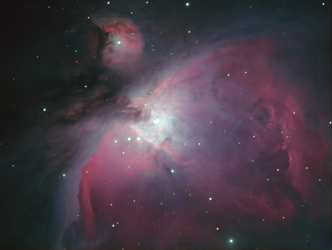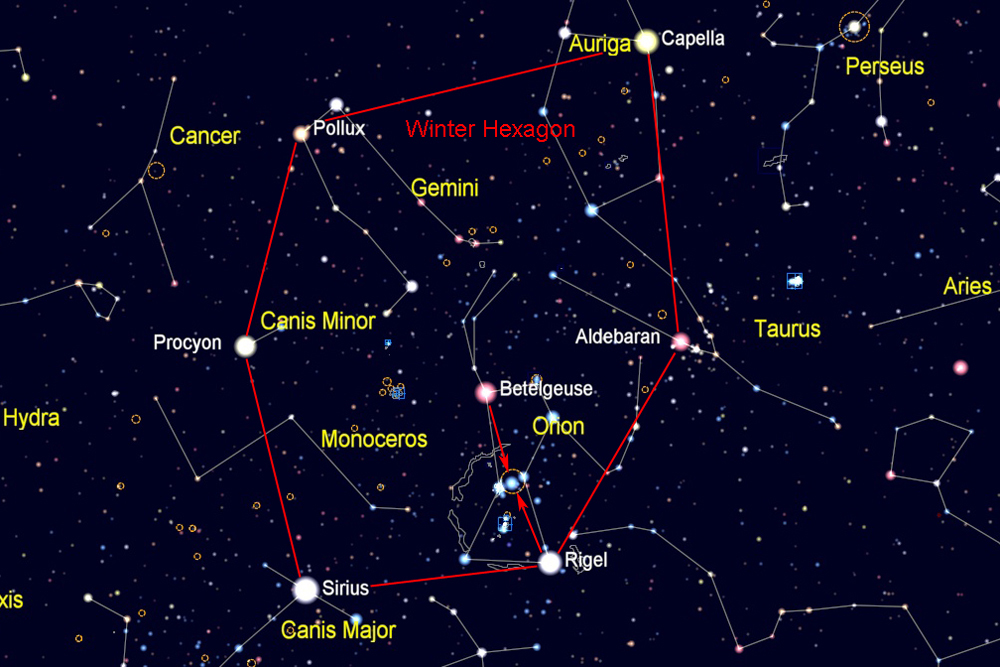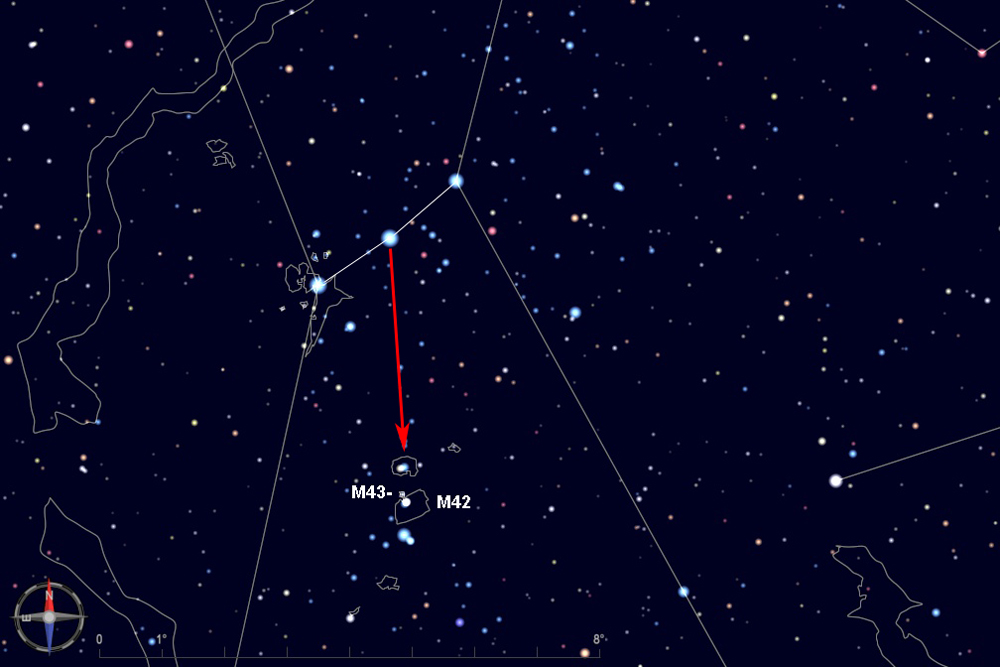
If you don't know how to find the constellation Orion, first find the Winter Hexagon, which is composed of six of the brightest stars in the sky--Sirius, Procyon, Pollux, Capella, Aldebaran, and Rigel. On mid-winter evenings, these stars form a large oval stretching from low in the south to nearly overhead. As spring begins, the Winter Hexagon sinks toward the west. The constellation Orion and its bright red star Betelgeuse are inside the Hexagon.
Between Betelgeuse and Rigel is a row of three bright stars that form the belt of Orion.

Look below the center star of Orion's belt and you should see a row of three dimmer stars, oriented north-south. To the naked eye, the central star of this group may appear slightly fuzzy. It is the Orion Nebula.
